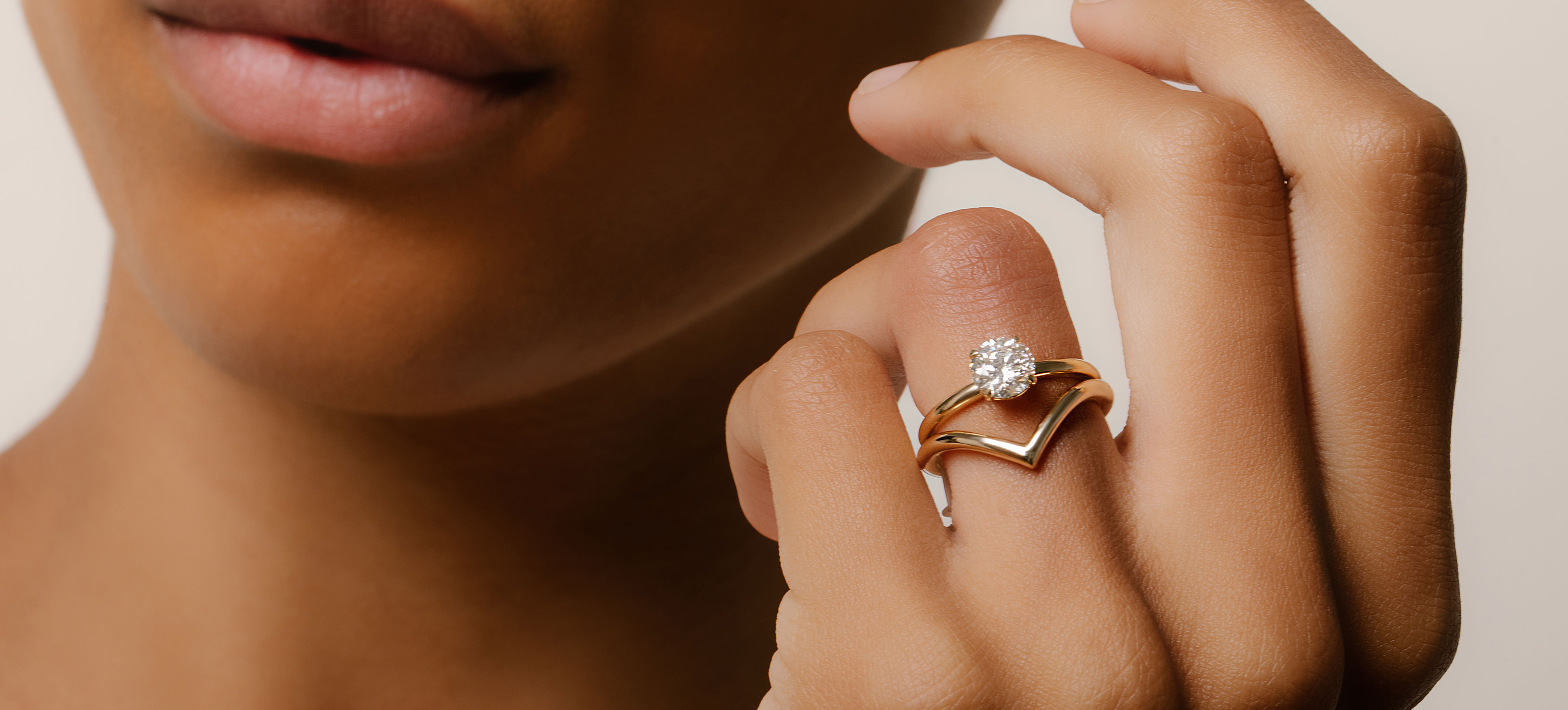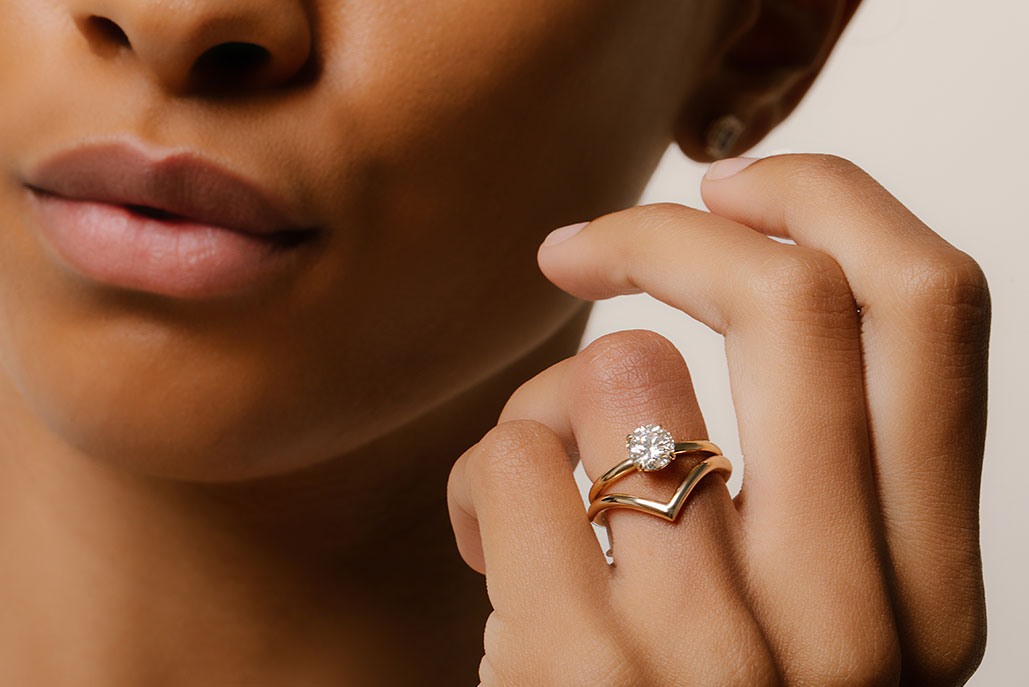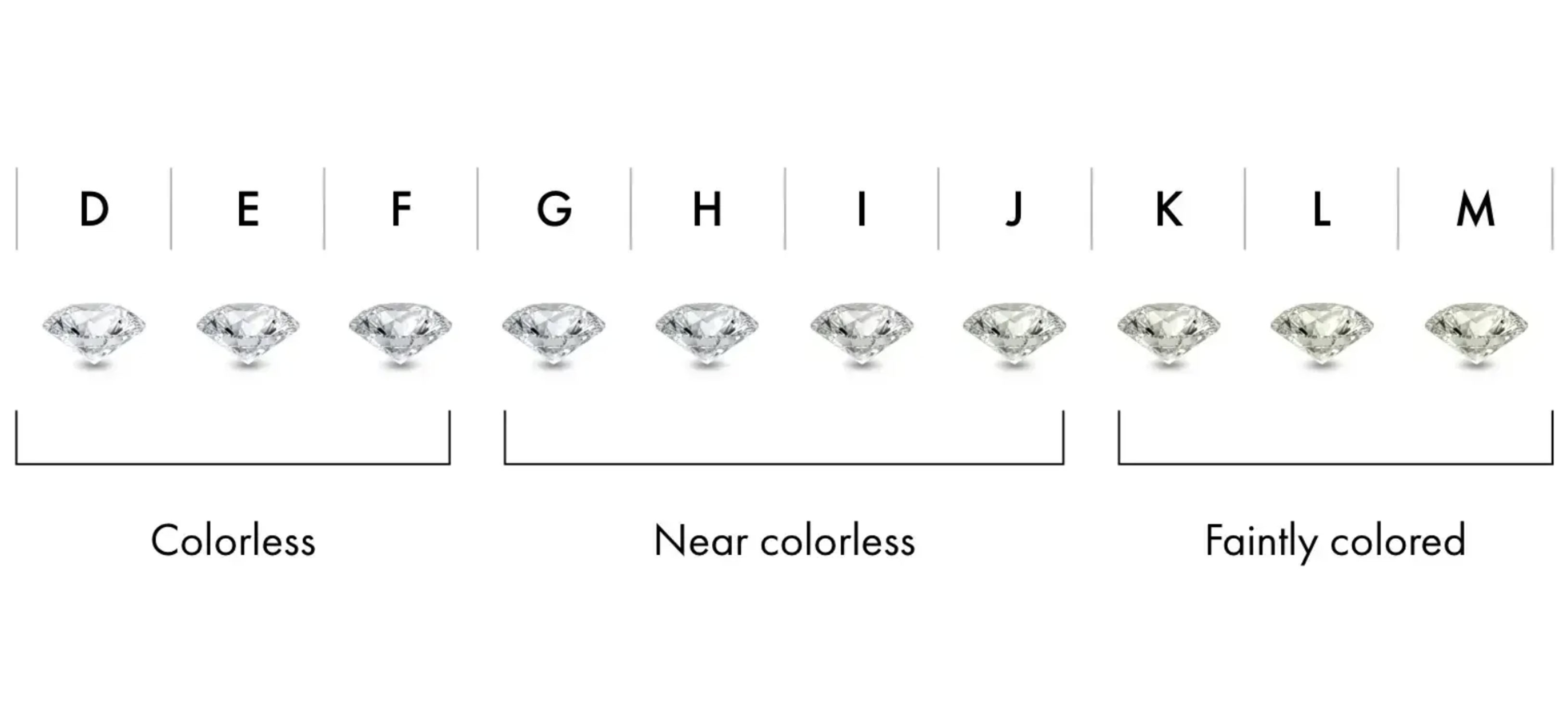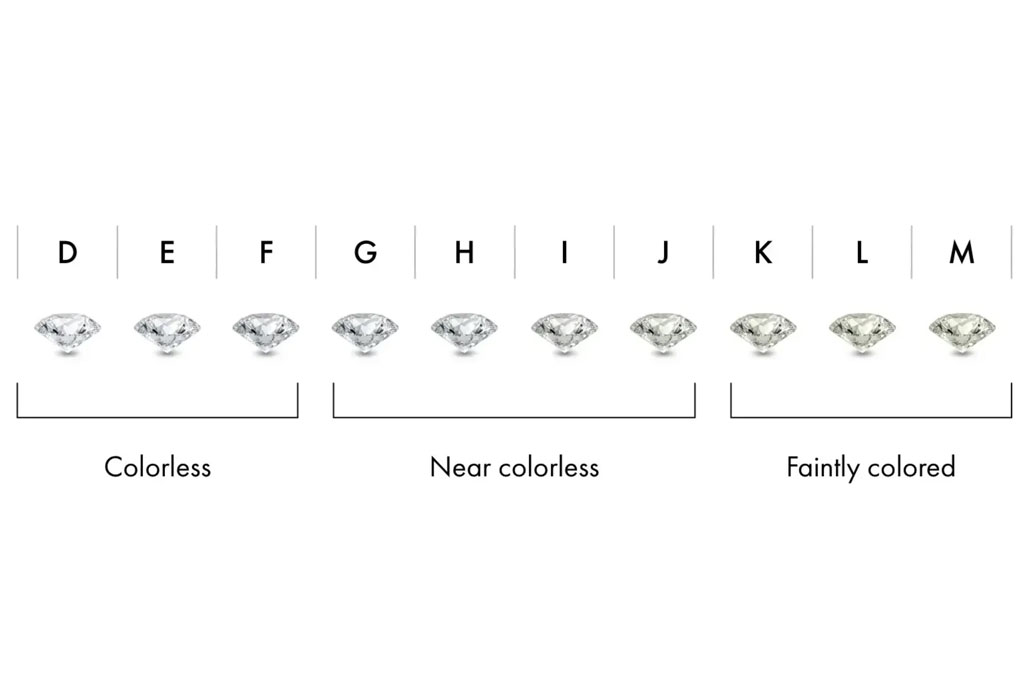

Diamonds Defined: Understanding Color
VRAI | May 04, 2021
When it comes to the 4Cs of diamonds - cut, color, clarity, and carat - the second most important of the “Cs” is color. But what is actually being referenced is the absence of color. Diamonds come in a variety of hues, but truly colorless white diamonds are rare; most will have a slight hint of yellow. The closer to colorless a white diamond is, the rarer and more valuable it becomes.
The importance of diamond color
Color impacts a diamond’s overall appearance. Even the untrained eye is capable of discerning the color variations between clear and pale yellow. Consequently, color is a major indication of a diamond’s value.


Diamond color grade
This “C” is graded on the absence of color. Starting from D, meaning colorless, the scale follows the alphabet downward. Colorless to near colorless diamonds appear clear on the scale, and sit in a range of D through J. Anything beyond J is where slight amounts of pale color begin to show through.


Choosing your diamond color
To identify the right diamond color for you, consider the overall design. Aside from value, factors like shape, size and setting can give you a better sense of the best diamond grade that suits your priorities.

Color & carat
Carat size has a hand in how obvious a diamond’s color appears. The larger the diamond, the more evident color. If your diamond will be under a carat, you can get away with a lower color grade, but if you’re interested in a larger diamond, it’s recommended to invest in a higher color grade.

Color & shape
Certain diamond shapes will hide color better than others. The symmetry of round brilliant diamonds can allow you to save on color with a slightly lower grade. Emerald shapes tend to hide color as well and can tolerate a lower color grade. Shapes with larger face-up size, like the oval, are inclined to show color more and are better suited for colorless or near colorless diamonds. The more unique shapes—cushion, pear, marquise, and trillion—are also susceptible to showing more color.

Color & setting
The metal in which you set your diamond can also have an effect on the perception of its color. Yellow gold can offset diamonds of a more yellow hue. Rose gold’s warmth, like yellow gold, can also balance out slight yellow tones. White gold or platinum can emphasize yellow coloring within a diamond and if choosing one of these two metals, we suggest prioritizing a higher color graded diamond for a more balanced design.
VRAI’s true colors
VRAI offers colorless, near colorless and faintly colored diamonds sustainably grown in our zero-emissions foundry. At this level, color differences are difficult to detect unless compared side-by-side. Our VRAI created diamonds are primarily colorless or near colorless ranging from D-J on the color scale. For diamonds with eye-visible color grades, the extent of the visibility of the faint hue can be viewed through our 360 videos for each unique diamond, based on their shape and cut, or requested from our diamond specialists during virtual appointments.
Explore available diamonds or discover the engagement ring setting meant for you.